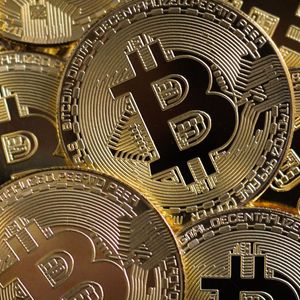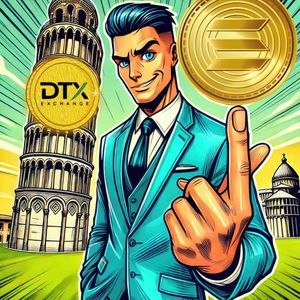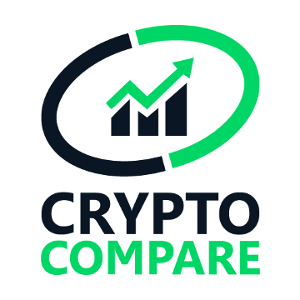Hold onto your hats, crypto enthusiasts! January witnessed a seismic shift in the Solana landscape, and it’s all about fees. Buckle up as we dive into the electrifying news: monthly Solana transaction fees have just smashed all previous records, hitting a staggering $550 million. Yes, you read that right – half a billion dollars in just one month! This unprecedented surge, highlighted by crypto insights platform Unfolded, has everyone in the crypto sphere buzzing. But what does this mean for you, the Solana user, and the broader crypto ecosystem? Let’s unpack this exciting development and explore what’s driving this dramatic increase in Solana transaction fees . Solana Transaction Fees: A Record-Breaking Surge Explained The crypto world is no stranger to volatility, but this jump in Solana transaction fees is noteworthy even by crypto standards. To put this into perspective, $550 million isn’t just a number; it represents a significant shift in the economic dynamics of the Solana network. While detailed comparative data for previous months isn’t readily available in the initial post, the term ‘record high’ itself speaks volumes. It suggests a substantial increase compared to any point in Solana’s history. This immediately begs the question: what’s fueling this meteoric rise in crypto transaction fees on Solana? Several factors could be contributing to this surge. Let’s break down some potential drivers: Increased Network Activity: The most straightforward explanation is simply more people using the Solana network. Increased trading volume, more DeFi activity, a boom in NFT minting and trading, or even the popularity of new Solana-based applications can all lead to a higher volume of transactions. More transactions naturally translate to more fees. Meme Coin Mania (Again?): Remember the meme coin frenzy? These often lead to massive, albeit sometimes fleeting, spikes in network activity as traders rush to buy and sell trending tokens. If January saw a resurgence in meme coin popularity on Solana, this could be a significant factor. Network Congestion (Potentially): While Solana is known for its speed, periods of intense activity can still lead to network congestion. When the network gets busy, users often bid higher transaction fees to ensure their transactions are processed quickly. This bidding war can drive up the average blockchain fees . Increased Demand for Block Space: In any blockchain, block space is a limited resource. If demand for including transactions in blocks increases, miners or validators (in Solana’s case, validators) can prioritize transactions with higher fees. This fundamental economic principle of supply and demand plays a crucial role in fee dynamics. To truly understand the driving forces, we need more detailed on-chain data. Examining transaction volumes, types of transactions (DeFi, NFTs, transfers), and network congestion metrics for January would provide a clearer picture. However, the sheer magnitude of the $550 million figure strongly suggests a confluence of these factors at play. Decoding Blockchain Fees: What Are They and Why Do They Matter? For those newer to the crypto space, let’s quickly demystify blockchain fees . In essence, transaction fees are charges users pay to have their transactions processed and included in the blockchain. These fees serve several critical purposes: Incentivizing Validators: In proof-of-stake blockchains like Solana, validators are responsible for verifying transactions and maintaining the network’s integrity. Transaction fees reward these validators for their work, encouraging them to continue securing the network. Preventing Spam and Network Congestion: Transaction fees act as a deterrent against malicious actors flooding the network with spam transactions. By making transactions costly, it becomes economically unfeasible to attack the network in this way. Funding Network Development: While not always directly, transaction fees contribute to the overall economic sustainability of the blockchain. In some models, a portion of fees might be used for network upgrades or development initiatives. Understanding blockchain fees is crucial because they directly impact the cost of using a blockchain network. High fees can make certain activities, like small transactions or frequent trading, less attractive or even prohibitive. Conversely, low fees are a major selling point for many blockchains, attracting users who prioritize cost-effectiveness. Impact of Soaring Solana Transaction Fees: Winners and Losers? The record-breaking Solana transaction fees have ripple effects across the Solana ecosystem. Let’s consider who might benefit and who might face challenges: Potential Winners: Solana Validators: Validators are the most direct beneficiaries. Higher transaction volumes and fees translate directly into increased revenue for them. This can enhance their profitability and incentivize them to further invest in robust infrastructure, contributing to network security and performance. Long-Term Network Sustainability: Increased fee revenue can strengthen the long-term economic sustainability of the Solana network. A healthy validator ecosystem, supported by transaction fees, is crucial for the network’s continued operation and growth. Potential Challenges: Everyday Solana Users: For the average user, higher fees mean increased costs for interacting with the Solana network. Simple token transfers, DeFi transactions, and NFT activities all become more expensive. This can be particularly impactful for users with smaller portfolios or those who frequently transact on the network. Small-Scale DeFi and NFT Participants: High crypto transaction fees can disproportionately affect smaller players in the DeFi and NFT spaces. Activities that were previously cost-effective might become less so, potentially hindering participation and innovation at the grassroots level. Potential for Reduced Network Adoption (Long-Term): If Solana transaction fees remain consistently high, it could deter new users from joining the ecosystem, especially those who are price-sensitive or exploring crypto for the first time. While Solana has always emphasized speed and scalability, affordability is also a key factor in attracting and retaining users. It’s a delicate balancing act. While increased fees can benefit validators and network sustainability, excessively high fees can alienate users and stifle growth. The sweet spot lies in finding a fee level that is both economically viable for validators and accessible for a broad range of users. Are High Crypto Transaction Fees the New Normal? The question on everyone’s mind is: are these elevated crypto transaction fees on Solana here to stay? It’s difficult to predict the future with certainty, but we can analyze the situation and consider different scenarios. Scenario 1: Temporary Spike Due to Transient Factors It’s possible that the January surge was driven by temporary factors, such as a short-lived meme coin craze or a period of unusually high network activity. If these factors subside, we might see Solana transaction fees return to lower levels. In this scenario, the record high would be an anomaly rather than a new baseline. Scenario 2: New Baseline Reflecting Increased Demand Alternatively, the $550 million figure could signal a fundamental shift in the demand for Solana block space. If the overall Solana ecosystem continues to grow, with more applications, users, and transaction volume, higher fees might become the new normal. This would indicate strong and sustained demand for the network. Scenario 3: Network Upgrades and Fee Optimization The Solana team and community are constantly working on network optimizations and upgrades. It’s conceivable that future developments could lead to increased network capacity and potentially lower fees, even with continued growth in usage. Layer-2 solutions and other scaling technologies could also play a role in mitigating fee pressures. The reality is likely a combination of these scenarios. We might see fluctuations in Solana transaction fees depending on market conditions and network activity. However, the long-term trend will likely be influenced by the continued growth of the Solana ecosystem and the effectiveness of ongoing network optimizations. Navigating the Fee Landscape: Tips for Solana Users Regardless of whether high Solana transaction fees are temporary or become the new norm, here are some actionable insights for Solana users to navigate this evolving landscape: Be Mindful of Transaction Timing: Network congestion often fluctuates throughout the day. Experiment with sending transactions during off-peak hours, which might result in lower fees. Utilize Fee Estimation Tools: Explore Solana fee estimation tools (if available – this is an area that could see development). These tools can provide insights into current network conditions and help you estimate appropriate fees. Prioritize Transaction Value: For smaller transactions, consider batching them together or exploring alternative solutions if fees become prohibitively expensive. Focus on using the Solana network for higher-value transactions where the fees are a smaller percentage of the overall value. Stay Informed About Network Upgrades: Keep an eye on announcements from the Solana Foundation and community regarding network upgrades and fee optimization efforts. These developments could significantly impact future fee levels. Explore Layer-2 Solutions (If Applicable): As the Solana ecosystem matures, layer-2 scaling solutions might emerge. These solutions could offer lower fees for certain types of transactions. Conclusion: A Record High and the Road Ahead for Solana The record-breaking $550 million in monthly Solana transaction fees for January is undoubtedly a significant event. It underscores the growing demand for the Solana network and highlights the evolving dynamics of blockchain fees in the crypto space. While high fees present challenges for some users, they also signify a robust and active network, rewarding validators and contributing to long-term sustainability. As Solana continues to evolve, finding the right balance between network accessibility and economic viability will be crucial. Monitoring Solana transaction fees , understanding the underlying drivers, and adapting usage strategies will be essential for both users and the broader Solana community. The January record serves as a powerful reminder of Solana’s growing prominence and the dynamic forces shaping the future of decentralized finance. To learn more about the latest crypto market trends, explore our article on key developments shaping Solana’s ecosystem and future growth.


















